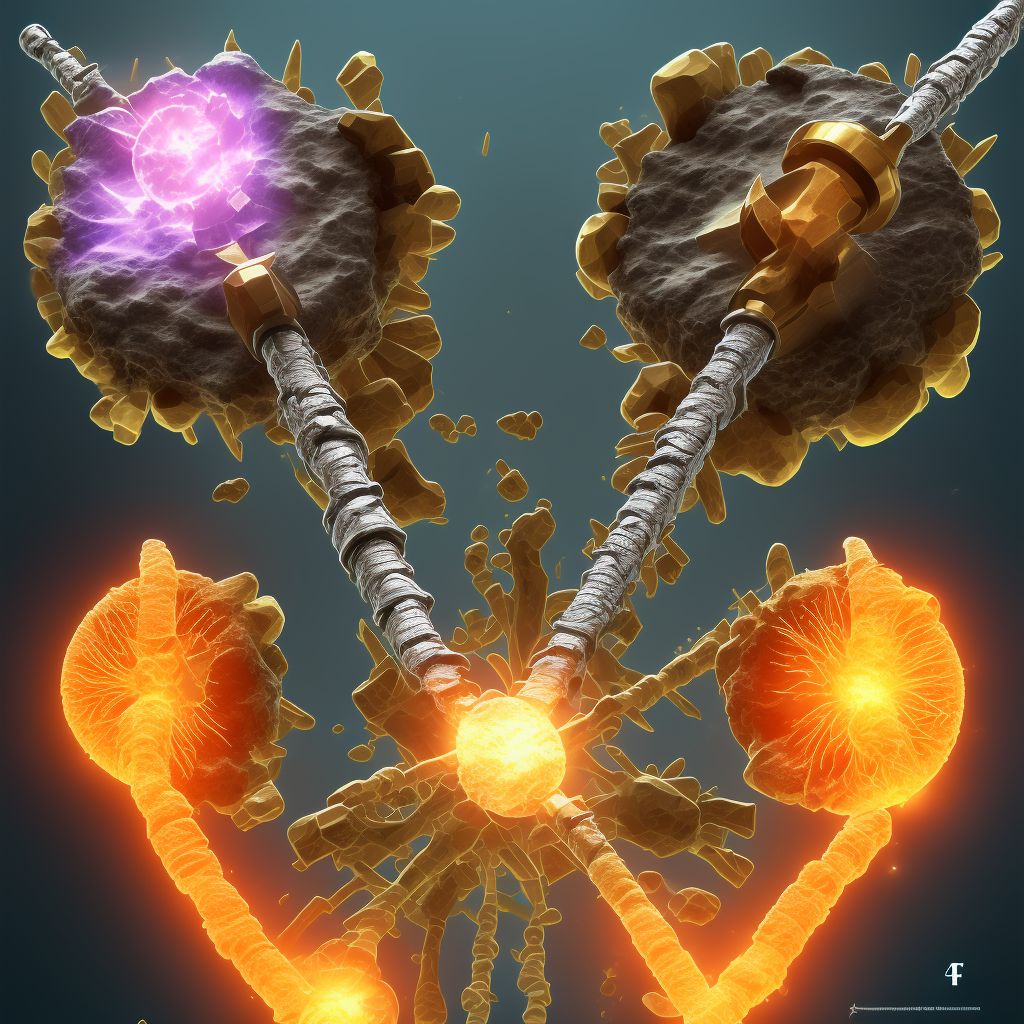
Displaced transverse fracture of shaft of left tibia, initial encounter for open fracture type IIIA, IIIB, or IIIC Save
ICD-10 code: S82.222C
Disease category: S82.222: Displaced transverse fracture of shaft of left tibia
Displaced Transverse Fracture of Shaft of Left Tibia: Understanding Open Fracture Types IIIA, IIIB, or IIIC
When it comes to fractures, one specific type that requires immediate medical attention is the displaced transverse fracture of the shaft of the left tibia. This article aims to provide a basic understanding of open fracture types IIIA, IIIB, or IIIC, which are often associated with this injury.
An open fracture occurs when the broken bone pierces the skin, leaving it exposed to the external environment. The severity of open fractures is classified into three types based on the extent of soft tissue damage and the presence of associated vascular injury.
- Type IIIA: This type of open fracture involves adequate soft tissue coverage despite extensive damage. Although the wound may be large, it can typically be closed primarily without the need for a flap or graft.
- Type IIIB: In this case, there is significant soft tissue loss, making primary wound closure impossible. It often necessitates a local or distant flap or graft to cover the exposed bone.
- Type IIIC: The most severe among the three, type IIIC open fractures involve arterial injury requiring repair or reconstruction to restore blood flow to the injured limb.
Immediate medical attention is crucial for patients with displaced transverse fractures of the shaft of the left tibia, as these injuries can lead to long-term complications if not treated promptly and appropriately.
Common symptoms of this fracture include severe pain, swelling, visible deformity, and an open wound around the site of the injury. It is important not to delay seeking medical help in these cases to minimize the risk of infection and ensure proper healing.
Once at the hospital, a thorough examination and imaging, such as X-rays or CT scans, will be conducted to assess the extent of the fracture and associated soft tissue damage. Based on the severity of the open fracture, the appropriate treatment plan, which may involve surgery or non-surgical methods, will be determined by the healthcare team.
In conclusion, displaced transverse fractures of the shaft of the left tibia, especially when accompanied by open fracture types IIIA, IIIB, or IIIC, require urgent medical attention. Understanding the severity of these injuries and seeking immediate treatment can significantly improve the chances of successful recovery and minimize potential complications.
Treatment of Displaced transverse fracture of shaft of left tibia, initial encounter for open fracture type IIIA, IIIB, or IIIC:
Treatment Options for Displaced Transverse Fracture of Shaft of Left Tibia, Initial Encounter for Open Fracture Type IIIA, IIIB, or IIIC
If you have been diagnosed with a displaced transverse fracture of the shaft of your left tibia, initial encounter for open fracture type IIIA, IIIB, or IIIC, it's important to understand the treatment options available to you. These fractures can...
To see full information about treatment please Sign up or Log in